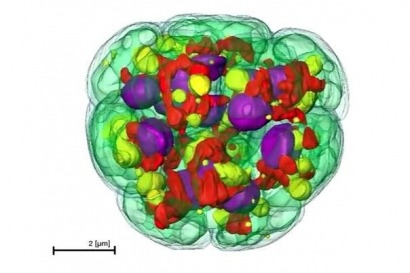
The work was published online in the Proceedings of the National Academy of Sciences.
“Algae absorb carbon dioxide and derive their energy from sunlight, and C. zofingiensis in particular can be cultivated on non-arable land and in wastewater. Harnessing it as a source for renewable and sustainable biofuels could lead to new ways to produce clean energy,” stated Krishna Nyogi, co-senior author of the paper and a scientist at the Department of Energy’s Lawrence Berkeley National Laboratory.
Knowing the genome is like having a “dictionary” of the alga’s approximately 15,000 genes, said co-senior author Sabeeha Merchant, a UCLA professor of biochemistry. “From there, researchers can learn how to put the ‘words’ and ‘sentences’ together, and to target our research on important subsets of genes.”
C. zofingiensis is also a natural source for astaxanthin, an antioxidant derived from dietary algae that gives salmon its pinkish hue. Scientists believe astaxanthin may have benefits for treating a range of diseases, from cancer and obesity to diabetes, cardiovascular and neurodegenerative diseases.
For additional information:

